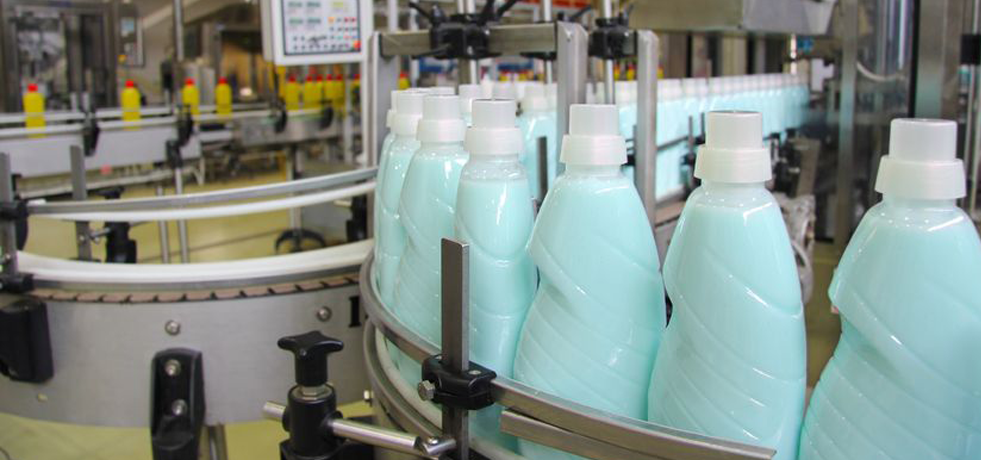It’s a fact that smaller businesses have less flexibility than major enterprises when it comes to choosing suppliers, especially for raw materials and direct supplies. Quite simply, smaller scale means a lower degree of influence across a smaller range of vendors.
But is that such a bad thing, given the trend among large enterprises to consolidate purchases and even execute strategies based on single sources for key materials and products?
Of course, there is no single answer to suit every SME, but to help you evaluate your supplier strategy and avoid costly mistakes, we recommend that you consider the following pros and cons of multiple versus single-vendor procurement strategies. You’ll even find a few examples highlighting why certain companies decided upon one strategy over the other.
Single Supplier: The Pros
Just to be clear, the following comments refer to single, not sole vendor situations, and therefore assume that you have a possibility to choose from more than one supplier.
If you pursue a single supplier strategy then you’re going to commit to purchasing a given resource from just one vendor. Provided you can find a supplier with which dependencies will be well balanced, there are some advantages to such a strategy. For example…
- Building and maintaining a relationship with one supplier is easier than with two or more
- Administrative and other costs are reduced when you place orders with just one supplier
- You can maximise volume leverage to attain attractive pricing
- It’s easier to streamline and integrate systems with a single supplier
- You may be able to negotiate to receive small, frequent deliveries and so improve inventory control
Successful Single Sourcing: An Example
Single sourcing may also present opportunities to enhance your brand’s reputation. For example, by sourcing products or components from a single supplier that is itself a trusted brand, and making that fact known to your customers, you can emphasise your company’s commitment to providing an end product of exceptional quality.
This was the approach taken by Beazer Homes in the United States, when the company decided to contract with Kwikset as its single supplier of door hardware. Beazer also found that a single sourcing approach contributed to successful cost reduction and supply chain optimisation.
The Cons of Single Sourcing
It is often said that placing all your eggs in one basket can be risky, which is something to consider in making a decision between single and multiple supplier sourcing.
If something should happen to your supplier, whether it be financial insolvency, a physical setback (such as a fire in the supplier’s main warehouse), or just a period of poor material-availability here and there, you may find yourself unable to keep your promises to your customers.
Other disadvantages of single supplier sourcing include:
- The possibility that potential customers will be concerned about risk to their supplies (if they become aware that you are single sourcing).
- It can be more difficult to ensure your company remains competitive if tied to single suppliers for multiple material/product categories.
- Any general shortage in a single-sourced material or product might be a bigger issue than if you deal with two or more suppliers.
- There is a risk that over time, the balance of dependence will become lopsided.
The last point is particularly pertinent if your company is the one with the dependency. For example, the supplier’s business may grow and take on more big customers, reducing the supplier’s dependence on your business. This introduces the risk of reduced service standards and perhaps even shortages or stock-outs.
When Single Sourcing Goes Wrong: Examples from the Auto Industry
Participants in the auto-manufacturing industry have fallen foul of single-sourcing pitfalls from time-to-time, resulting in the need to shut down assembly lines, sometimes for days at a time, due to unforeseen events affecting parts suppliers. It happened to Ford, for example, back in 1998.
With the cost of one minute of downtime on car assembly lines said to be in the region of $20,000, there must have been times when automotive brands rued the decision to single source components such as car seats and door latches.
Multiple Suppliers: The Pros
In many cases, small to medium enterprises might be best to try to avoid going the single supplier route, unless the risks can be fully mitigated and/or are heavily outweighed by the advantages. At the same time, it’s not always advantageous to deal with a multitude of suppliers.
Still, there are benefits to working with two or three suppliers, especially when smaller businesses must procure customised materials or components. For instance…
- If one of your suppliers is bought by a competitor, or runs into financial or business difficulties, you have at least one supplier to fall back on.
- While you may not have so much leverage with each supplier, there are opportunities to take advantage of competition between them, though this will depend to some extent, on your company’s importance to each supplier.
- Demand fluctuations can be more manageable if you have a choice of suppliers with whom to adjust order volumes.
- Having two or more suppliers will increase your company’s ability to circumvent supply disruptions.
Even Two Suppliers can be Better than One
Pharmaceutical giant Biogen decided to switch from a single to dual-sourcing strategy for certain materials following a catastrophic series of natural events in 2017.
Despite have an advanced strategy for supply-chain risk management, Biogen had several narrow escapes when Hurricanes Harvey, Irma, and Maria, along with an earthquake in Mexico, threatened to disrupt suppliers’ production, and in the case of Maria, actually did so.
After executing swift reactions to production stoppages at Puerto Rican suppliers’ facilities, Biogen recognised the need to have alternative sources going forward, and hence began dual sourcing off-the-shelf components, replacing the original strategy to single-source highly customised items.
The Cons of Multiple Supplier Strategies
There are some aspects of sourcing which become a bit more challenging if you work with multiple supplier contracts. For one thing, this strategy doesn’t lend itself so well to forging long-term strategic relationships with suppliers.
Even if you don’t consider supplier partnerships as being a high priority, the following characteristics of multiple-supplier relationships can also become drawbacks if the behaviour of buyers and suppliers is not carefully managed:
- Information sharing is less straightforward and can present risks.
- Lower order volumes mean less bargaining power, and competition between suppliers may not be sufficient to generate the same cost savings as volume leveraging.
- The lower your suppliers’ stake is in your business, the less responsive they will be in times of emergency.
- There is more overhead involved in contract negotiation, management, and process execution when you have to deal with multiple suppliers.
Remember too, that aside from the commercial issues mentioned above, a multiple-supplier strategy can also become challenging in terms of quality control.
Multiple Suppliers: Impact on Quality and Consistency
Let’s take the textile industry as an example. If your business buys “the same” fabric from more than one supplier, perhaps as upholstery for your furniture business, it is very likely indeed that there will actually be some differences in the two suppliers’ products. It may be a slight variance in colour, or texture, or the dimensions of the fabric rolls.
In such a situation, you have to be a lot more careful about maintaining consistent quality in your upholstery, by ensuring for instance, that fabrics from two suppliers are not used on a single piece of furniture.
With a single supplier, this is unlikely to be an issue, so production is simplified and quality control is rather easier. While this may be a crude example, it does highlight how the use of multiple suppliers can add complexity to your operational processes, as well as those related to pricing and supplier management.
Don’t Confuse Single Sourcing with Strategic Sourcing
As mentioned at the start of this post, recent years have seen strong trends in supplier consolidation and a move away from transactional to more strategic relationships between buyers and suppliers. Many larger organisations have gone as far as to implement single-source strategies, such as Deere & Co. did with some of its agricultural machinery components.
Certainly this is understandable for companies that may deal with tens or even hundreds of suppliers, or are of a scale that makes them a healthy prize for just about any vendor.
That’s not to say that cutting down your supply base or even switching to a single supplier strategy is the wrong thing to do for your smaller business. So much depends on the nature of your industry and the markets in which you trade.
However, if your supply chain is long, and you have a reasonable number of suppliers to choose from, you might want to consider whether shifting to a single source model for your key commodities is a step too far, and instead try to maintain healthy relationships with at least a couple of vendors.
This post was originally published in August 2017. It has now been revamped to include additional content, making the article more comprehensive and informative.









Really informative and nice article on suppliers strategy, thanks for sharing the important and educative article, Keep up the good work.
Thanks, I’m glad you found it useful!
this helped me in my assignment a whole lot
I’m glad you found it useful!
Very informative such a good work.
Glad you found it informative! Thanks!